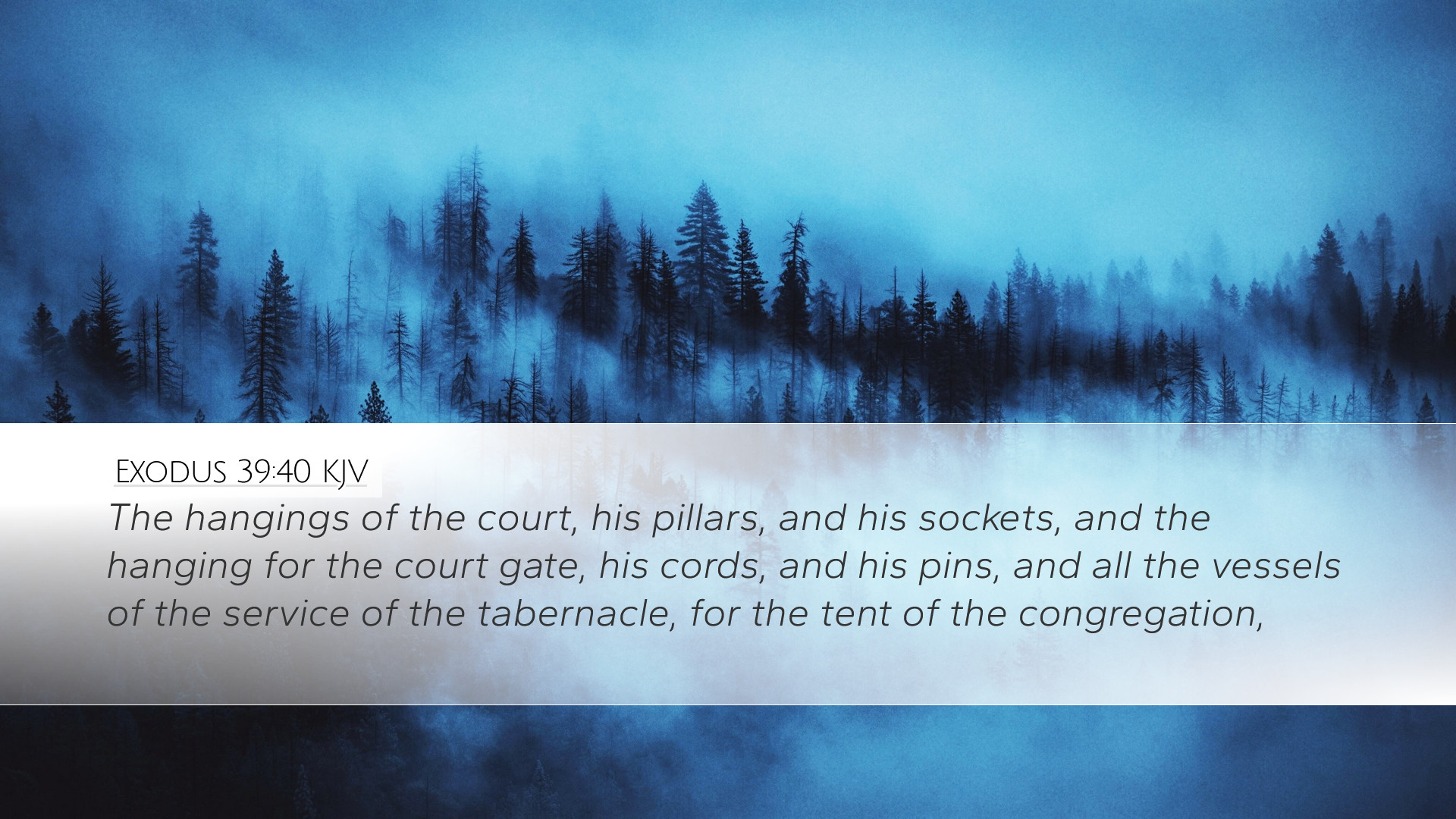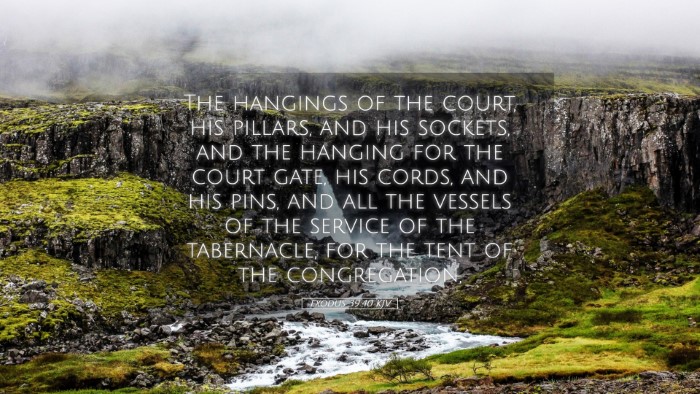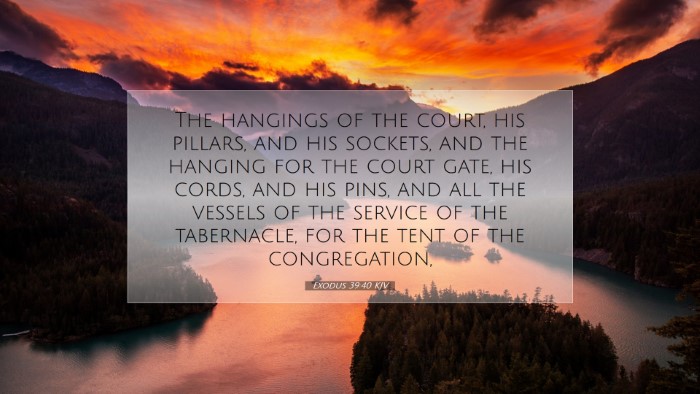Exodus 39:40 Commentary
Bible Verse: Exodus 39:40 - "The hangings of the court, his pillars, and his sockets, and the hanging for the door of the court, his cords, and the instruments of his service, and all the work of the service of the tabernacle, for the tent of the congregation." (KJV)
Introduction
This verse concludes a detailed account of the construction of the tabernacle and its elements, emphasizing the meticulousness with which God's commands were followed. The mention of various components serves to illustrate the entirety of the tabernacle's design and the importance of each part performing its intended function within the religious framework of Israelite worship.
The Importance of Attention to Detail
The account in Exodus 39 emphasizes how critical it was for the Israelites to adhere closely to the divine instructions given to Moses. According to Matthew Henry, the description of the tabernacle's parts teaches that God requires His people to pay attention to detail in His service.
- In Matthew Henry's Commentary, it is stated that God's tabernacle symbolizes His presence. Hence, every detail reflects the glory and holiness of God.
- Albert Barnes highlights the fact that the Israelites did not take these preparations lightly. Their obedience was vital for ensuring that God’s presence was with them.
- Adam Clarke draws attention to the craftsmanship of the workmen, indicating that skill and dedication were paramount in the construction process.
Understanding the Elements
Each component mentioned in this verse plays a critical role in the overall function of the tabernacle:
- Hangings of the Court: The hangings served as a boundary, delineating sacred space where God and His people could meet.
- Pillars and Sockets: These provided the necessary support for the structure, symbolizing the strength and stability God desires in His house.
- Hanging for the Door: The entrance signifies access to God, and its specific design speaks to the exclusivity of God's presence requiring a careful approach.
- Cords and Instruments of Service: These elements represent the detailed preparations required for worship and indicate the importance of proper tools for serving God faithfully.
Symbolism and Theological Implications
The overall symbolism of these components extends beyond mere physicality into profound theological realms:
- Representation of God's Holiness: Henry notes that even the outer court's hangings reflect God’s pursuit of holiness and order in His dwelling place.
- Mediation and Access: Barnes argues that the careful organization indicates the mediatory role of the priests, pointing ultimately to Christ as the mediator who opens the way to God.
- Community and Worship: Clarke emphasizes that the communal nature of the tabernacle's worship establishes a pattern for modern congregational worship, where careful organization is essential to honoring God.
Conclusion
Exodus 39:40 contains vital insights into the character of God as one who values order, beauty, and intentionality in the worship of His people. The detailed account serves as a reminder that our worship, much like the construction of the tabernacle, must embody dedication and care. As pastors, theologians, and students of the Word engage with this passage, it challenges them to consider what it means to create space for divine presence in their own lives and communities.


